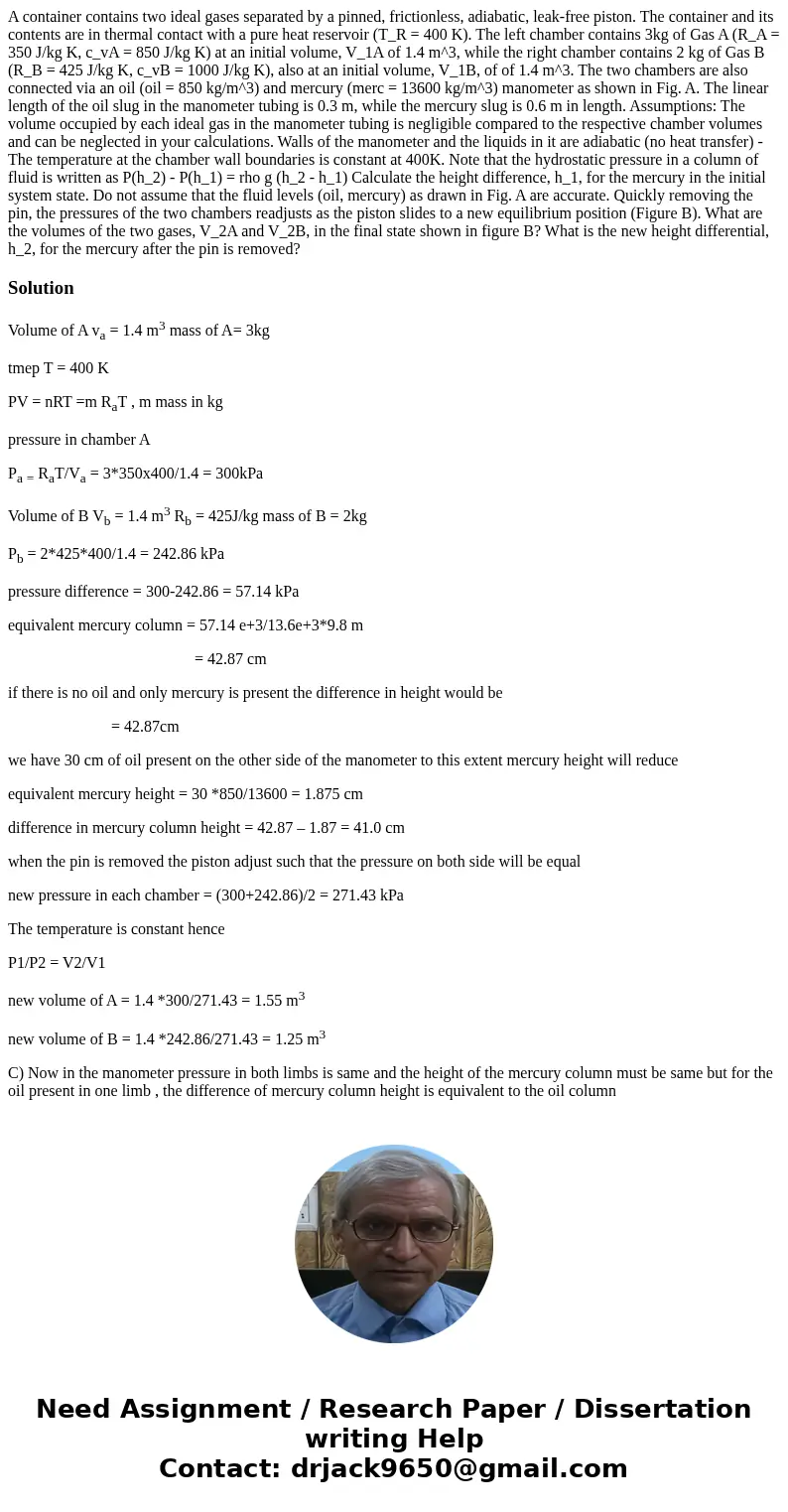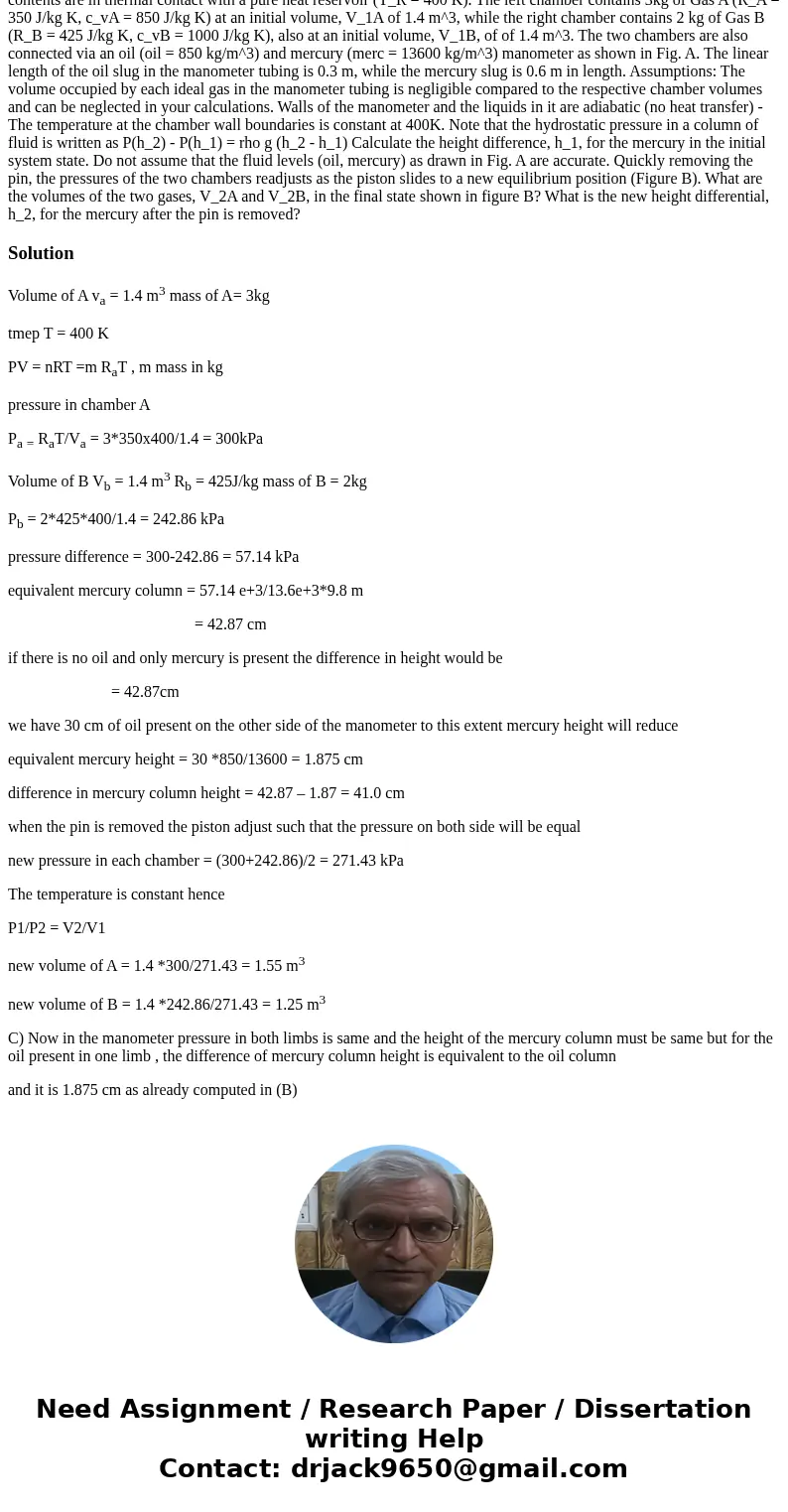A container contains two ideal gases separated by a pinned, frictionless, adiabatic, leak-free piston. The container and its contents are in thermal contact with a pure heat reservoir (T_R = 400 K). The left chamber contains 3kg of Gas A (R_A = 350 J/kg K, c_vA = 850 J/kg K) at an initial volume, V_1A of 1.4 m^3, while the right chamber contains 2 kg of Gas B (R_B = 425 J/kg K, c_vB = 1000 J/kg K), also at an initial volume, V_1B, of of 1.4 m^3. The two chambers are also connected via an oil (oil = 850 kg/m^3) and mercury (merc = 13600 kg/m^3) manometer as shown in Fig. A. The linear length of the oil slug in the manometer tubing is 0.3 m, while the mercury slug is 0.6 m in length. Assumptions: The volume occupied by each ideal gas in the manometer tubing is negligible compared to the respective chamber volumes and can be neglected in your calculations. Walls of the manometer and the liquids in it are adiabatic (no heat transfer) -The temperature at the chamber wall boundaries is constant at 400K. Note that the hydrostatic pressure in a column of fluid is written as P(h_2) - P(h_1) = rho g (h_2 - h_1) Calculate the height difference, h_1, for the mercury in the initial system state. Do not assume that the fluid levels (oil, mercury) as drawn in Fig. A are accurate. Quickly removing the pin, the pressures of the two chambers readjusts as the piston slides to a new equilibrium position (Figure B). What are the volumes of the two gases, V_2A and V_2B, in the final state shown in figure B? What is the new height differential, h_2, for the mercury after the pin is removed?
Volume of A va = 1.4 m3 mass of A= 3kg
tmep T = 400 K
PV = nRT =m RaT , m mass in kg
pressure in chamber A
Pa = RaT/Va = 3*350x400/1.4 = 300kPa
Volume of B Vb = 1.4 m3 Rb = 425J/kg mass of B = 2kg
Pb = 2*425*400/1.4 = 242.86 kPa
pressure difference = 300-242.86 = 57.14 kPa
equivalent mercury column = 57.14 e+3/13.6e+3*9.8 m
= 42.87 cm
if there is no oil and only mercury is present the difference in height would be
= 42.87cm
we have 30 cm of oil present on the other side of the manometer to this extent mercury height will reduce
equivalent mercury height = 30 *850/13600 = 1.875 cm
difference in mercury column height = 42.87 – 1.87 = 41.0 cm
when the pin is removed the piston adjust such that the pressure on both side will be equal
new pressure in each chamber = (300+242.86)/2 = 271.43 kPa
The temperature is constant hence
P1/P2 = V2/V1
new volume of A = 1.4 *300/271.43 = 1.55 m3
new volume of B = 1.4 *242.86/271.43 = 1.25 m3
C) Now in the manometer pressure in both limbs is same and the height of the mercury column must be same but for the oil present in one limb , the difference of mercury column height is equivalent to the oil column
and it is 1.875 cm as already computed in (B)


 Homework Sourse
Homework Sourse